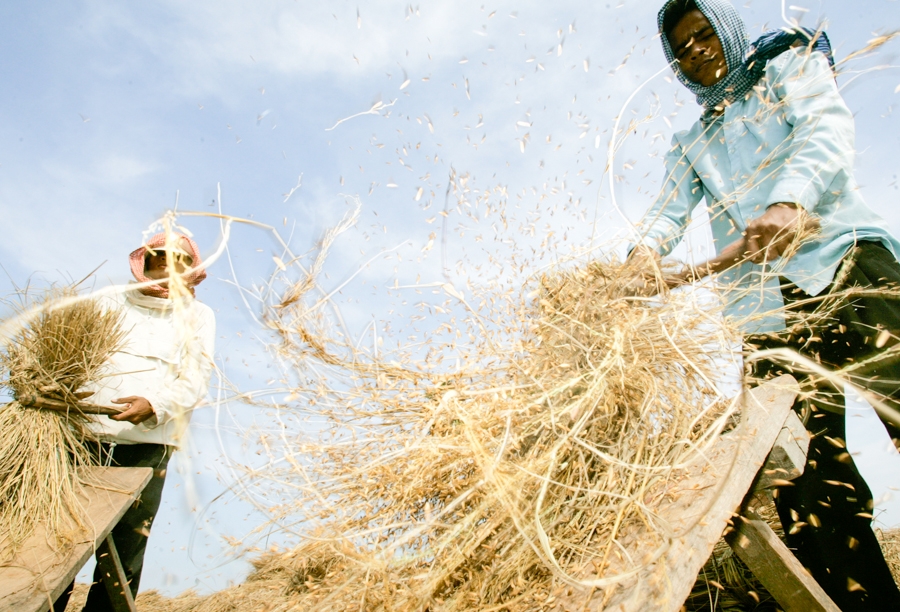(Thailand) Cambodia: WB: Cambodians Still Vulnerable
While the World Bank commended Cambodia for its strong economic growth and efforts to reduce poverty over the past two decades, it, however, cautioned yesterday that the agriculture and garment sectors posed challenges which could make that growth unsustainable.
“An overview of the past two decades, from 1994 to 2014, indicates strong economic growth – with the economy expected to grow at 7.7 percent,” stated the World Bank’s Systematic Country Diagnostic (SCD) for Cambodia.
“Extreme poverty declined from around seven million [Cambodians] in 2004 to 1.6 million in 2013,” added the SCD.
The SCD is a study conducted by the World Bank based on empirical evidence, to identify key challenges and opportunities for poverty reduction and inclusive, shared growth and development in Cambodia.
Presenting the SCD at a consultative meeting in the National Assembly, Miguel Eduardo Sanchez Martin, senior economist at the World Bank, said that challenges to sustain strong economic growth were in the agriculture and garment manufacturing sectors.
“Going forward, Cambodia is expected to be able to grow largely due to productivity gains but cannot rely on further land expansion or a continued commodity price boom,” said Mr. Martin commenting on the SCD findings for agriculture.
Mr. Martin, quoting the findings in the SCD, said there was also a high export concentration in garments and diversification was needed.
“Over the last decade, products and markets have concentrated in textile and clothing – representing 70 percent of exports in 2014. But export sophistication is still low and Cambodia’s garment exports are cheaper than average,” he added.
The SCD findings also indicated that the percentage of economically vulnerable people in the country remains large.
“Poor and economically vulnerable population together still represent 65 percent of the total population. The slowdown in agriculture may expose the economically vulnerable,” stated the SCD.
On public health, the SCD pointed out that 70 percent of total health expenditure was made by Cambodians themselves and this out-of-pocket expenditure was among the highest in the world.
The SCD findings for education indicate low secondary completion rates with only 45 percent finishing lower secondary school.
“This is inferior to lower middle-income countries that have a 72 percent completion rate. The lack of human capital limits mobility and prospects for economic upgrading,” stated the SCD.
Chheang Von, a lawmaker from the ruling CPP, disagreed with some of the SCD findings and requested that the World Bank update the report based on current realities in the country.
“We do support and appreciate the SCD report indicating an economic growth rate of over seven percent. However, we want the World Bank economists to update the report with current realities and highlight the development efforts of the government,” said Mr. Von.
Son Chhay, an MP from the opposition CNRP, said the government should trust the SCD report because it was based on empirical scientific evidence.
“This is a strategic plan to help the Cambodian government alleviate poverty and avoid development pitfalls,” said Mr. Son Chhay.
“We have to learn to accept the recommendations from the World Bank based on the findings of the report, and also learn to work together to alleviate the problems highlighted,” he added.
“This World Bank report could form the basis for the government to allocate its expenditure from the national budget into sectors like agriculture, health and education.”
Utrich Zachau, country director of the World Bank for Southeast Asia, said the discussion with representatives of the National Assembly focused on the priority sectors in Cambodia that needed to be developed further to raise the income of Cambodians and lift them out of poverty.
“Results from the SCD is expected to help identify development challenges and prioritize policy to help address those challenges,” said Mr. Zachau.
(Additional reporting by Sonny Inbaraj Krishnan)
Source: http://www.khmertimeskh.com/news/33166/wb–cambodians-still-vulnerable/


 Thailand
Thailand




